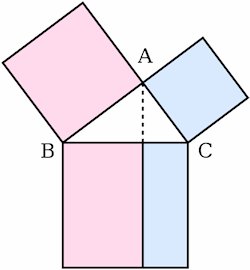Dulcarnon
Geoffrey Chaucer included this in his poem Troilus and Criseyde of about 1374. Criseyde says that she’s in a dulcarnon over something and is at her wits’ end. This led to I am at dulcarnon meaning that the speaker is utterly perplexed or at a complete loss.
In the middle of the nineteenth century increased interest in the works of Chaucer and the history of language led to scholars being deeply puzzled about dulcarnon. No other word like it existed in English and its own origins were unknown.
The matter was eventually cleared up by the famous philologist and Chaucer scholar Professor Walter Skeat. He worked out that it’s from Arabic dhu’lqarnayn, two-horned, an epithet applied to Alexander the Great because he claimed descent from Amun, a god of ancient Egypt who was often depicted with ram’s horns.

Do these look like horns to you?
When Euclid wrote his famous Elements of Geometry, he illustrated Pythagoras’s theorem by a diagram showing squares built on the three sides of a right-angled triangle. The way the picture was oriented made the upper two look fancifully like horns and in medieval times they were known to irreverent or exasperated students as dulcarnons. Many found Pythagoras’s theorem impossible to understand and dulcarnon came to mean an irresolvable puzzle.
Chaucer had Criseyde’s uncle Pandarus tell her that a dulcarnon was also called the flight of wretches. Unfortunately, he had his Euclid confused. This actually referred to a different proposition, known in Latin as the fuga miserorum or the pons asinorum, the bridge of asses. It proved that the angles opposite the equal sides of an isosceles triangle are themselves equal. This was the first real test of intelligence for someone studying geometry and anyone who couldn’t understand it was unlikely to be able to master the rest of Euclid.
Dulcarnon has been confused with horns of a dilemma. However, that refers to being forced to choose between two equally unsatisfactory alternatives, not being at a loss how to proceed at all.
